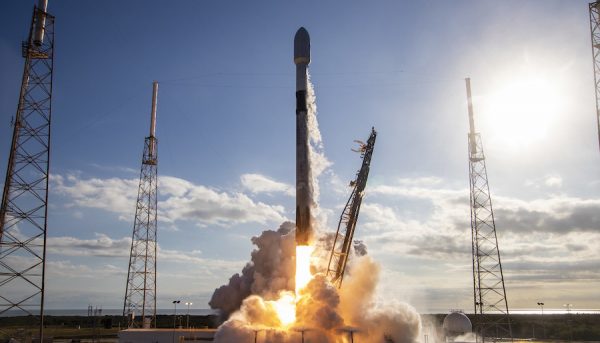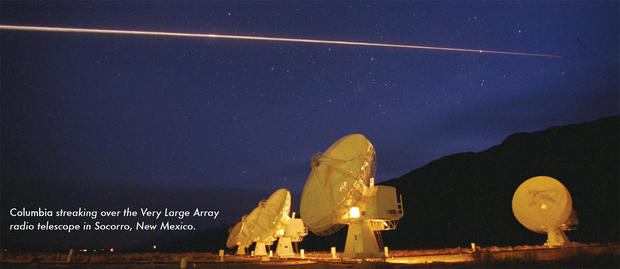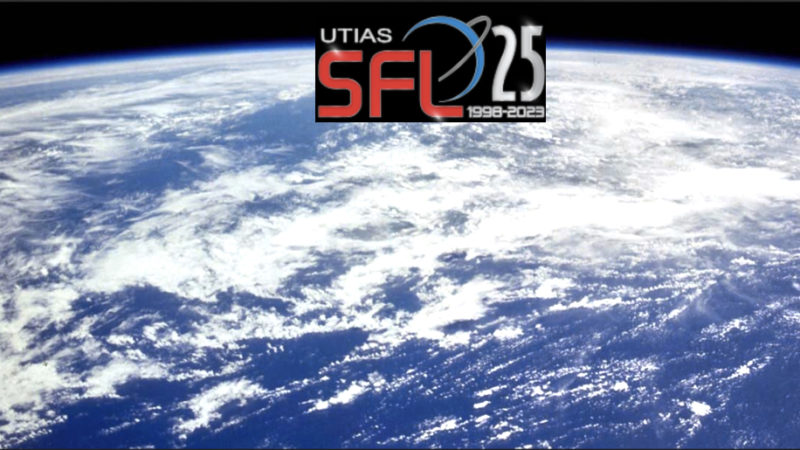Florida launch range remains open; Falcon 9 mission postponed – Spaceflight Now

Range personnel at Cape Canaveral will employ physical distancing, face covers and other cautionary measures to reduce the risk of spreading the coronavirus during launch operations, the commander of the U.S. military’s 45th Space Wing said.
But the next launch from Cape Canaveral has been postponed from Thursday until no earlier than next week, sources said. SpaceX is planning to fire off a Falcon 9 rocket with the next batch of Starlink Internet satellites.
The private satellite launch this week was scheduled for Thursday despite the coronavirus pandemic, which has forced delays in other space missions at Cape Canaveral. The U.S. Space Force said last week the next launch of a GPS navigation satellite — part of the country’s national security space program — has been delayed from late April until late June to protect ground crews from the virus.
SpaceX’s launch launch of around 60 more satellites for the company’s Starlink network could still happen next week, sources said. Officials have not disclosed a reason for the delay from Thursday.
With the Starlink project, SpaceX will deploy at least 1,500 orbiting relay nodes — and potentially thousands more — to beam Internet signals to homes and businesses around the world.
The next batch of Starlink satellites are scheduled to blast off from pad 39A at NASA’s Kennedy Space Center, adjacent to Cape Canaveral Air Force Station.
A SpaceX spokesperson has not responded to questions on the impact of the pandemic on the company’s operations.
Brig. Gen. Doug Schiess, commander of the military unit that oversees range operations at Cape Canaveral, said last week that the Starlink launch is not “mission-critical” for U.S. national security. But he said the Eastern Range remains open for launches from Cape Canaveral, and teams are taking steps to protect themselves from the virus.
“In looking at this, we believe that we can continue to do the range operations to be able to support (SpaceX) without any harm to our personnel, or our ability to do … public safety and resource protection,” said Schiess, commander of the Space Force’s 45th Space Wing.
Continuing with launch operations will also help ensure the schedule at Cape Canaveral later this year doesn’t become too busy, Schiess said last week.
“From a mission standpoint … it keeps our folks trained and ready, and then it doesn’t have an impact on the launch manifest later in the year,” he told reporters Thursday. “If we’re not doing any launches, then obviously things would start to back up, and then it may affect a national security launch at a later time.”
Teams in the range control center at Cape Canaveral Air Force Station will practice physical distancing during near-term launches, Schiess said, just as they did during the most recent launch from the Florida spaceport March 26.
On that mission, a United Launch Alliance Atlas 5 rocket lifted off from Cape Canaveral with a U.S. military communications satellite. A separate range crew will oversee the upcoming SpaceX mission, providing safety, security, weather forecasting and other support services required for every space mission that departs Cape Canaveral.
“We’re taking some precautions, and we’ve split our crews up, and also ask them health questions before they’re allowed into the operations center,” Schiess said.
Schiess has ordered all personnel working at Cape Canaveral Air Force Station to use face coverings if they can’t maintain at least 6 feet of physical distancing from other people.
“We’re not taking any risk to the individuals, and that’s why each mission is being looked at individually,” he said. “If we felt like this was too risky to do, then we would push (delay the launch).”
If a range team member tests positive for the coronavirus, Schiess said a separate team could be rotated in for the SpaceX launch.
Around 200 people are needed to provide range services for a SpaceX launch, with roughly 100 crew members stationed in range operations centers. The others, including security patrols, will be located at other sites on the spaceport.
SpaceX’s Falcon 9 and Falcon Heavy rockets use autonomous flight safety systems, which would automatically trigger a destruct command on the rocket if it flew off course. That reduces the personnel required to provide range safety support.
Schiess said more than 300 range personnel are required for United Launch Alliance missions, which use flight termination systems that would be manually commanded by a range safety officer on the ground.
The 45th Space Wing is evaluating the impacts of the coronavirus pandemic on a mission-by-mission basis, Schiess said.
“When it comes to me to approve the date that is on the launch schedule, thats when we do a little more (thinking) about what are we doing to mitigate the spread of the virus, and make sure that we’re safe,” he said.
Schiess said military officials are assessing how rescue teams at Patrick Air Force Base, located south of Cape Canaveral, can be trained and on standby for the planned launch of SpaceX’s Crew Dragon capsule with astronauts as soon as next month.
Military rescue teams at Patrick Air Force Base would be deployed to retrieve the astronauts on the Crew Dragon in the event of an abort after liftoff. Those rescue teams are scheduled to receive “just in time” training for the job before the Crew Dragon launch, which is scheduled for late May.
Meanwhile, construction and maintenance work continues at Cape Canaveral Air Force Station. Blue Origin is building a new launch pad for its New Glenn rocket, and Schiess said he was not aware of any impacts from the coronavirus on the construction.
“As long as their contractors and subcontractors meet the requirements, they can still continue to get on the base,” he said. “We see that at mission-essential kind of work.”
Workers completed an upgrade to the capacity of the spaceport’s helium system earlier this month, Schiess said. The system routes helium to various launch pads to provide pressurization gases for loading on rockets.
Email the author.
Follow Stephen Clark on Twitter: @StephenClark1.






